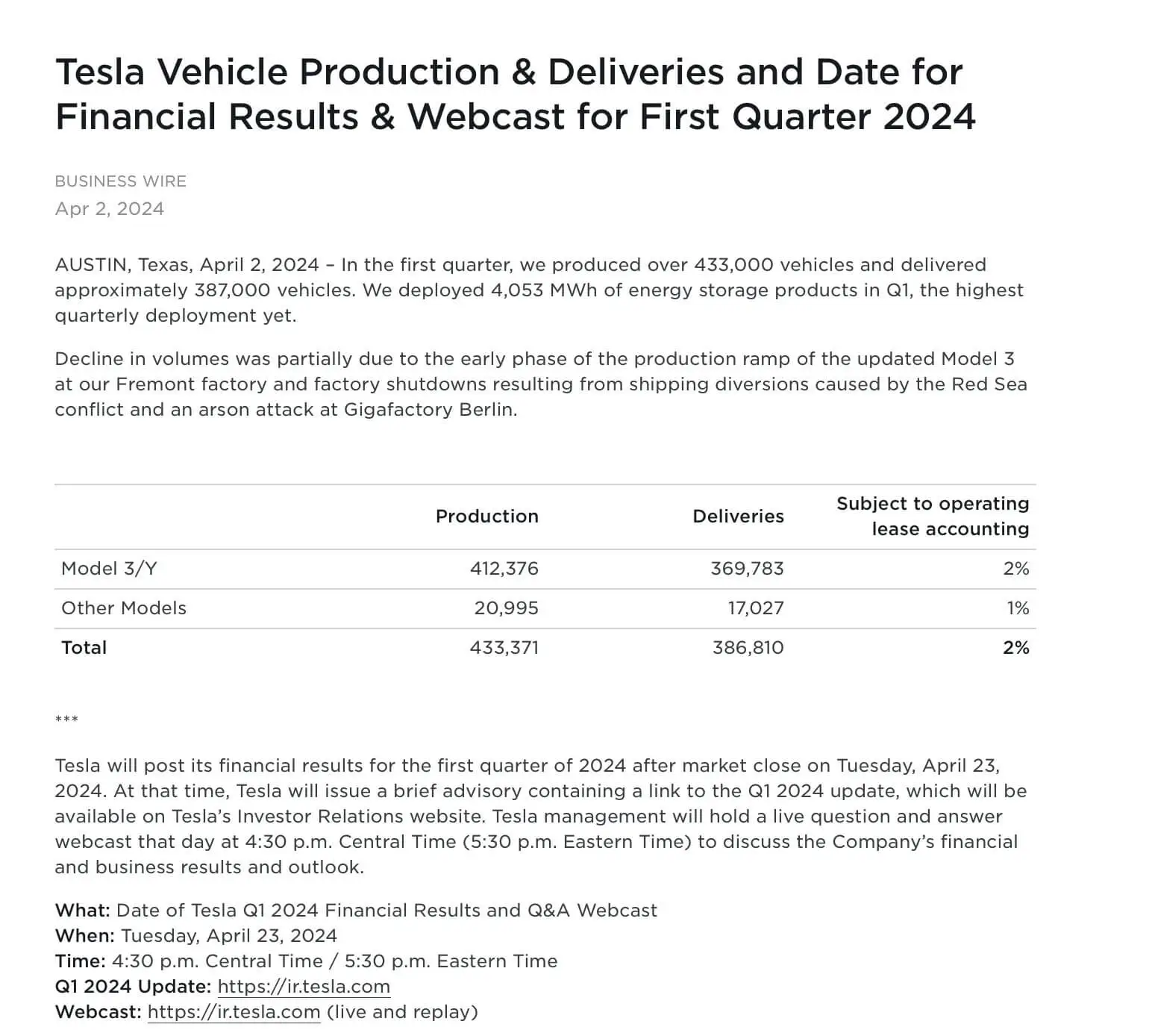Why Has Tesla Not Met Its Production Targets in Q1 2024?
Tesla, the undisputed leader in electric vehicle (EV) manufacturing and energy innovation, recently released its figures for the first quarter of 2024. Surprisingly, the company announced it had delivered 386,783 vehicles, a number lower than Wall Street analysts’ expectations, who had forecasted around 431,000 units. This shortfall has raised questions about the obstacles Tesla faced, which prevented the company from meeting its production targets.
Analysis of Production Challenges
Model 3 Update and Production Impact
One of the primary reasons cited by Tesla for this deficit is the initial phase of ramping up production of the Model 3 Ludicrous at its Fremont factory. Updating a model often requires adjustments in production lines, which can temporarily slow down the pace of vehicle manufacturing.
External Disruptions
Beyond internal challenges, Tesla also faced significant external disruptions. The company mentioned factory shutdowns resulting from shipping diversions caused by the Red Sea conflict, as well as an incendiary attack at the Gigafactory in Berlin. These events have highlighted the global production’s sensitivity to geopolitical tensions and acts of sabotage, underlining the complexity of maintaining a stable supply chain in a tumultuous international environment. These are the official reasons published on Tesla’s website.
Implications for Tesla and the EV Industry
Operational Resilience at the Core of Strategy
The obstacles faced by Tesla in Q1 of 2024 highlight the importance of operational resilience. For Tesla, navigating through these challenges involves not only overcoming short-term disruptions but also continually adapting its production strategies to anticipate and respond to market shifts and external contingencies.
Future Outlook
Despite these challenges, the future looks promising for Tesla. The company continues to innovate, not only in the field of electric vehicles but also in energy storage, as evidenced by the record installation of Megapacks, reaching 4,053 MWh. These developments indicate that Tesla is not only meeting expectations in electric vehicle production but also striving to redefine the global energy landscape.
Conclusion
The first quarter of 2024 was marked by significant challenges for Tesla, which failed to meet its production targets due to the Model 3 update and external disruptions. Nevertheless, these obstacles highlight Tesla’s ability to face adversity and continue its commitment to innovation and sustainability. Despite short-term difficulties, Tesla continues to pave the way towards a future where electric mobility and renewable energy storage play a central role in our society.
